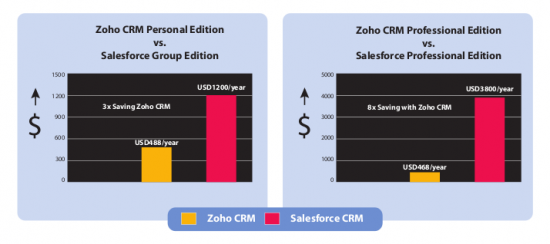The technology landscape has been undergoing a massive transformation over the past couple of years. In the early 2000s, organisations were going after products and appliances irrationally, investing huge sums without any guarantees of a quantifiable ROI (return on investment). Today, awareness of technology has grown and organisations tend to demand a measurable ROI before adopting a new technology. Open source software has always been a good option to provide effective solutions within relatively low budgets. Not surprisingly, a number of organisations have started adopting open source software solutions. This trend has been boosted by the ongoing recession, with companies looking to cut costs.
Open source can mean big bucks!
The revenues of Red Hat grew by 14 per cent during the last economic bust in 2001-2002, which then increased to 38 per cent and 58 per cent in 2003 and 2004, respectively, demonstrating the increased usage of open source software during the economic crunch. Novell also showed interest in playing a significant role in the open source software market in November 2003 by acquiring SUSE Linux for $210 million. Last year, Sun Microsystems acquired MySQL AB, the developer of the world’s most popular and fastest growing database, for $1 billion. Writing open source software enables a company to gain access to the open community, which in turn helps in accelerating the pace at which an idea matures.
John Roberts, CEO and founder, SugarCRM, started his company in 2004 with a commercial open source concept. In one of his interviews given to Sramana Mitra, in December 2008, he said, “I convinced two strong engineers at E.piphany to join me. We all resigned together and started SugarCRM without any angel or VC (venture capitalist) money. It was the three of us, each in his house with headphones on, writing and designing code and posting it up on SourceForge.net. We did that for three months. And soon enough, people all over the world started downloading the code.” Early this year, SugarCRM joined hands with Tata Communications to make its software accessible to the Indian industry.
A matter of generating revenues
But how do open source software companies make money? There are a variety of business models to generate revenues from open source software:
- Releasing commercial extensions/plug-ins to open source software
- Offering free community-based editions and paid commercial editions with more functionality and features
- Using free and open source to gain media attention, and attract users who might become potential customers for other commercial products
- Offering paid technical support along with free community-based support
- Making the software available via the Internet like on-demand applications, and offering paid subscriptions for online accounts and services
The point about paid technical support is particularly relevant in these times. A recent survey by IDC, a global market intelligence firm, suggests: “The economic slowdown in the United States may actually boost demand for open source services. If organisations adopt more open source software as part of a strategy to reduce software costs, the demand for related services should increase.” Many service providers have switched from expensive proprietary system management software to open source software like OpenNMS, Zenoss, Hyperic, Groundworks, Nagios, etc, so that they can cut down the technology cost overheads of their customers.
Finally, the SaaS (Software as a Service) business model has proved successful. SaaS delivers non-intrusive and hassle-free cloud-based products via a subscription-based model with no one-time costs involved—an organisation can pay as per software usage. The key to success for a SaaS player is obviously best technology usage, application features, and more importantly, an optimised pricing model. Coming up with a competitive pricing model becomes very difficult if the technology is built over expensive hardware or proprietary software licences. This challenge provides a great opportunity to utilise open source software as SaaS-ready solutions. The success enjoyed by companies like SugarCRM, Zoho (a Chennai-based offshoot of AdventNet) and Zimbra (acquired by Yahoo! in 2007 for $350 million), follows the same concept—enabling organisations to reduce their IT expenditure and increase flexibility by leveraging open source software. Zoho prepared a cost saving chart that compared its services with those offered by its competitor, SalesForce, highlighting the difference in costs between the two (see Figure 1).

According to Springboard Research, the Indian SaaS market is set to reach $165 million by 2010, due to a compound annual growth rate (CAGR) of 77 per cent from 2006 to 2010. We might see greater demand for software available under SaaS model running over private clouds or corporate networks than public clouds due to data security and compliance regulations, but small and medium-sized companies can utilise the software over public clouds to boost their performance at a much lower cost. The increasing demands for such models provides a huge opportunity for service providers to make a shift from traditional delivery models to avant-garde technology models. The economy might be having a tough time, but if they play their cards right, open source companies might never have had it so good.









































































